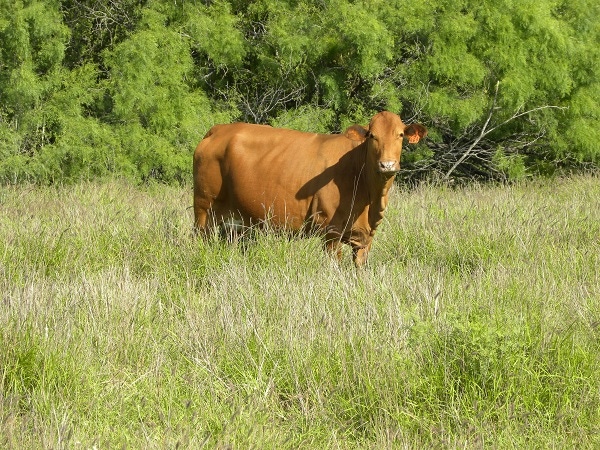July 29, 2014

Historic high cattle prices have changed the financial dynamics of the cattle industry.
Consequently, say Texas A&M AgriLife Extension Service economists, Texas cattle producers looking to restock herds may need to examine more options.
A recent Financial and Risk Management Assistance report outlined several factors for South Texas cattle producers to consider when purchasing replacements. The publication was compiled by Corpus Christi AgriLife Extension economists Mac Young and Dr. Levi Russell; Dr. Joe Paschal, AgriLife Extension livestock specialist, Corpus Christi, and Dr. Steven Klose, AgriLife Extension economist, College Station, also served as co-author.
The Financial and Risk Management Assistance program, commonly referred to as FARM Assistance, is a computerized decision support system developed to perfect methods in risk and decision making for farmers, according to AgriLife Extension economists.
For the latest on southwest agriculture, please check out Southwest Farm Press Daily and receive the latest news right to your inbox.
The economists used a 200-head herd in South Texas as a case study. Costs and returns on management practices were typical of the area. These may and can vary by operators. Ten-year averages were used to analyze and compare net cash farm income. Open heifers, bred heifers, young pairs, old pairs and open cows were evaluated to see which types would generate the most net income.
“As we move forward, higher feeder and replacement cattle prices in 2014 will have a significant impact on the short- and long-term profitability of cattle operations in South Texas,” Young said.
Current cattle prices, including replacements, are averaging 20 percent more when compared to July 2013 prices, the report notes. Availability of young pairs and open cattle will continue to be
Stocking strategies
“Depending on the availability and price of quality replacements, more than one stocking strategy may have to be used to rebuild a herd,” Young said. “In fact, it would be wise to revisit these and other options prior to purchase to re-evaluate them as conditions change in the future.”
Based on current 2014 market prices and conditions, restocking with older open cows may be the most profitable strategy for now, according to the study. Prices for open cows in the past year have not increased in proportion to other replacement females, but availability may be an issue due to previous culling, Young said. Average 10-year cash farm income per cow was $377 for open cows, while older pairs generated $341, young pairs $275, bred heifers $346 and open heifers $209.
“Bred heifers and older pairs also may offer more profitable strategies than young pairs or open heifers,” Young said. “The lower the initial capital outlay to repurchase cattle, and the availability of a calf to sell the first year, improves net cash farm income for bred heifers and pairs. Open heifers may be the least profitable way to replace due to not having a calf to sell in the first year and additional development costs.”
Young said in evaluating these restocking options, the important point to consider is the order or rank in terms of net cash farm income, not the actual value. In previous FARM Assistance studies, bred heifers and older pairs were more financially profitable than open cows.
Paschal said restocking considerations should include more than the age and pregnancy status of the replacements. Additional management costs for extra feed and health, and death and replacement losses also need to be considered.
“In this analysis, open cows are now the most profitable,” Young said.
According to the study, actual results will likely vary by producer, management practices, forage conditions, and cattle markets. The culling and calving rates used in the study may or may not reflect actual practices.
“For example, younger females may have been culled too heavily and older females not heavily enough,” Young said. “Additionally, the availability and quality of females by class may be an issue. This analysis should be used only as a guide in evaluating restocking options, and it should be remembered that the best restocking scenario may change from season to season.”
To view the report, visit http://farmassistance.tamu.edu.
You May Also Like




